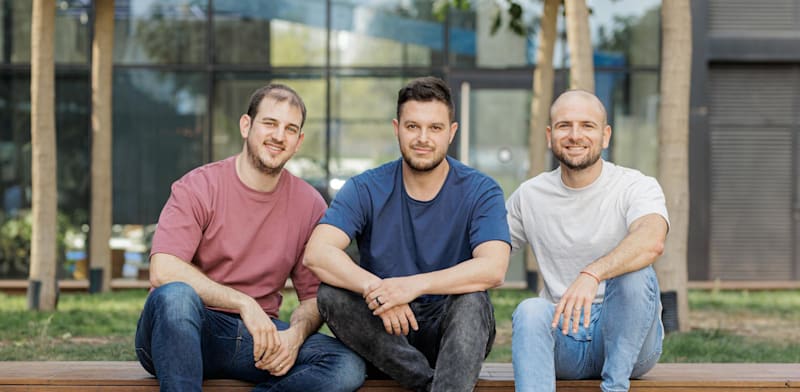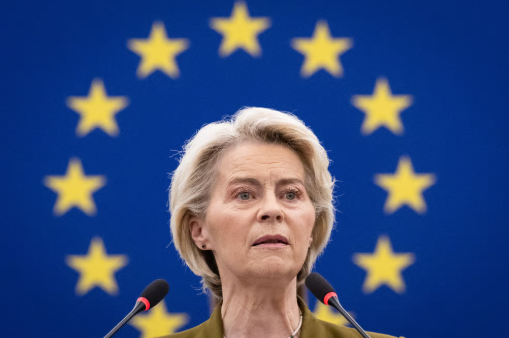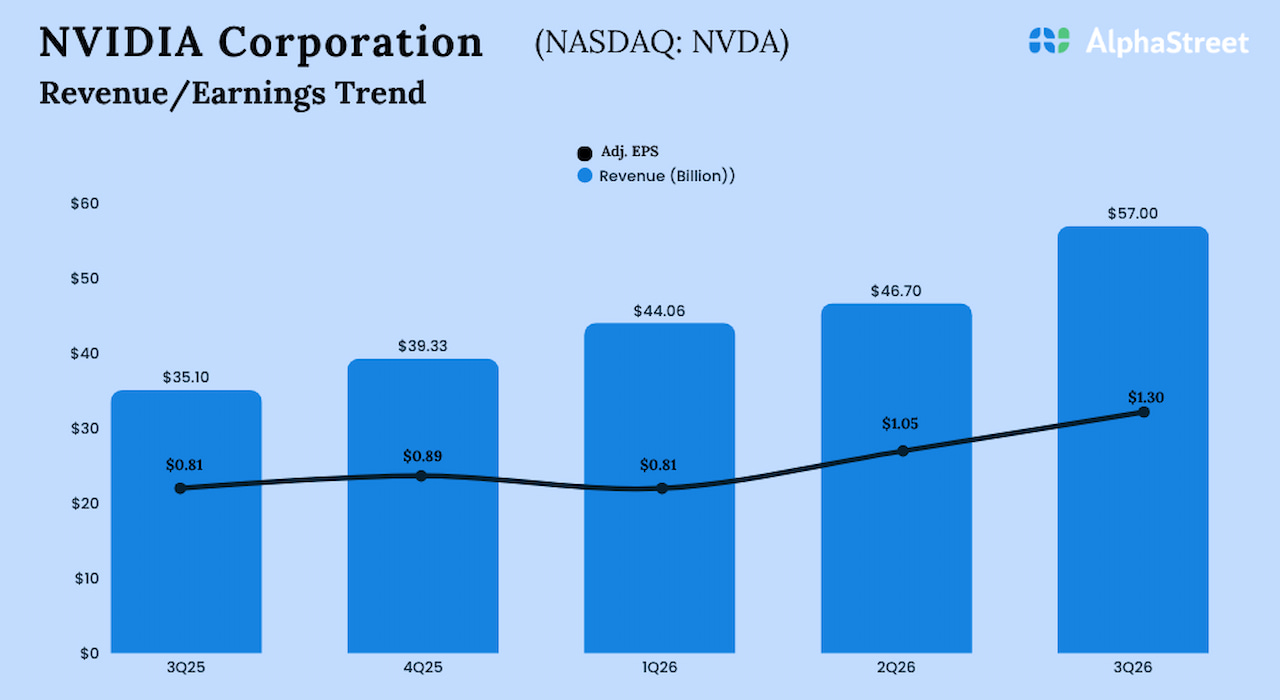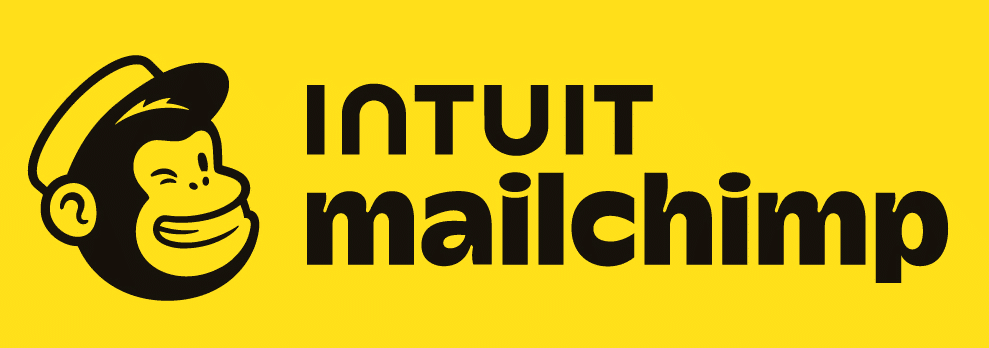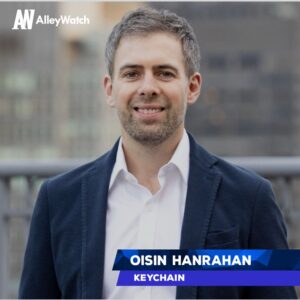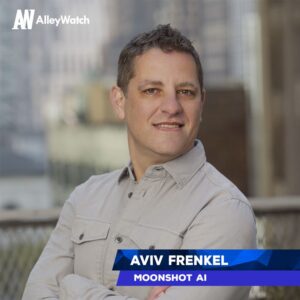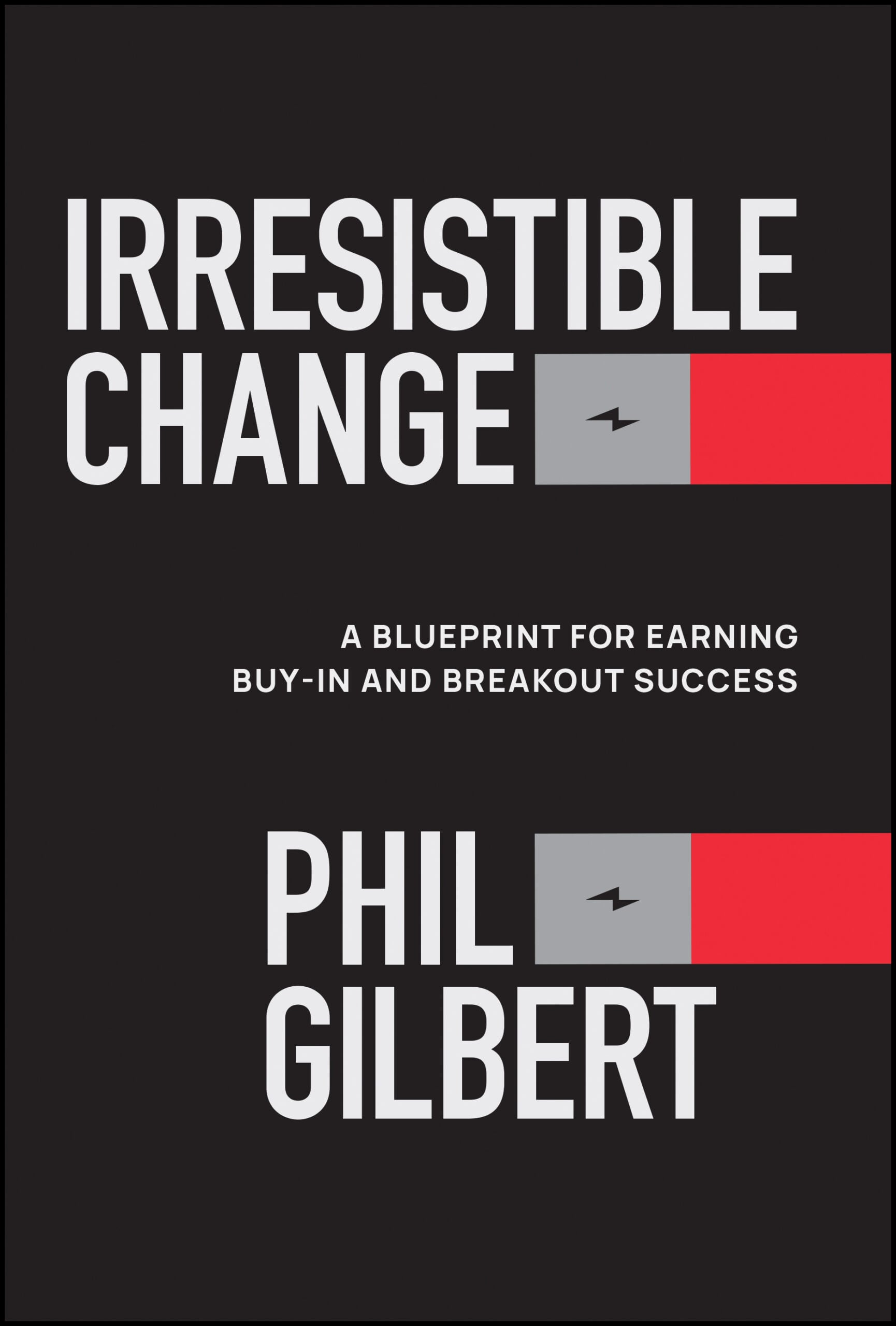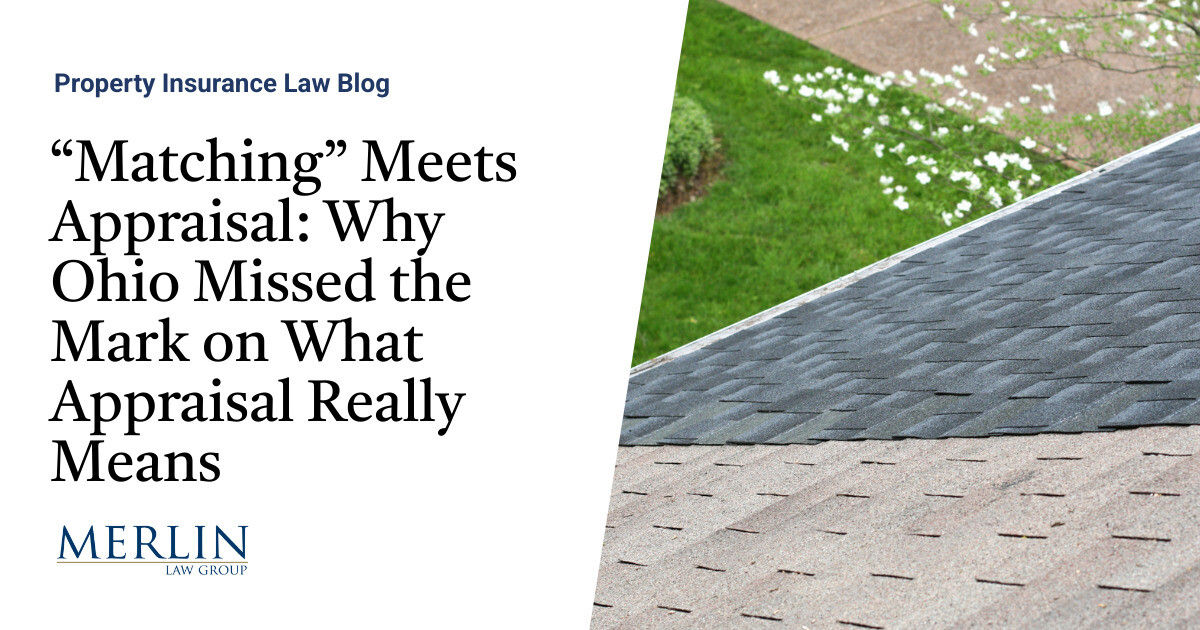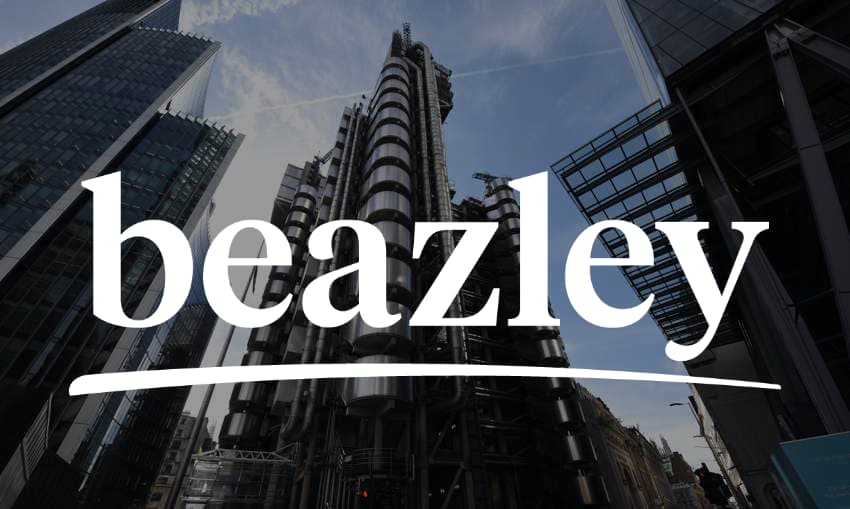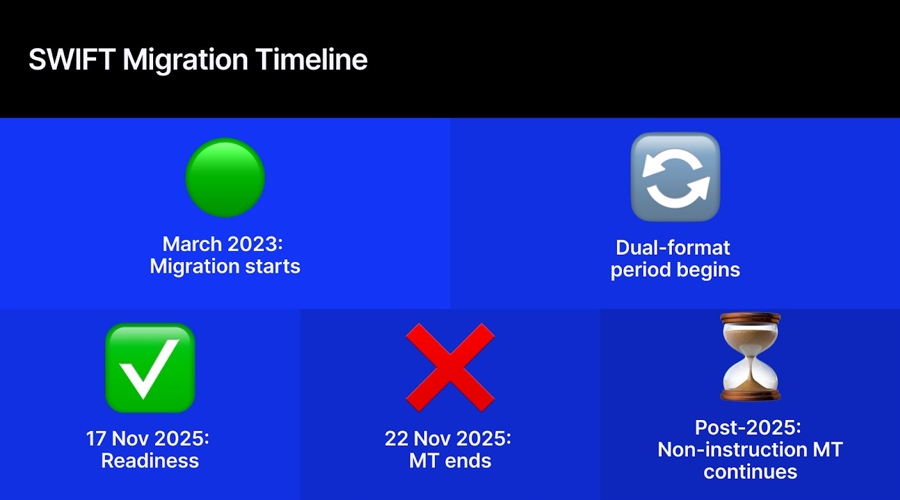thyssenkrupp AG (OTCPK:TYEKF) Q4 2022 Earnings Conference Call November 17, 2022 8:00 AM ET
Company Participants
Claus Ehrenbeck – Investor Relations
Martina Merz – CEO
Klaus Keysberg – Chief Financial Officer
Conference Call Participants
Bastian Synagowitz – Deutsche Bank
Jason Fairclough – Bank of from America
Alain Gabriel – Morgan Stanley
Tom Zhang – Barclays
Christian Obst – Baader Bank
Rochus Brauneiser – Kepler Cheuvreux
Operator
Dear ladies and gentlemen, welcome to the Webcast of thyssenkrupp. At our customers’ request, this conference will be recorded. After the presentation, there will be an opportunity to ask questions. [Operator Instructions] May I now hand you over to Claus Ehrenbeck, who will lead you through this conference. Please go ahead.
Claus Ehrenbeck
Yes. Thank you very much, operator. Yes, and hello everybody. This is Claus Ehrenbeck. And also on behalf of the entire team, I would like to wish you a very warm welcome to our conference call which is today on the Q4 numbers and the fiscal year. The presenters today will be Martina Merz, our CEO; and Klaus Keysberg, the CFO.
Before we start the presentation, please allow me to make just a brief, few housekeeping remarks. I want to say that all the documents here used for this call and for this release are available on the Investor Relations section on our Web site. As always, there will be a replay after the call later in the day.
And with that, I can say we are finished. And now with the housekeeping of course only, and I want to hand over to Martina for the presentation.
Martina Merz
Hello, everybody. A warm welcome from Essen, from my colleague, Klaus Keysberg, our IR colleagues here in the room and myself to our conference call on our Q4 and the ’21, ’22 figures. Let me start with a brief look back of what we are aiming at with our ongoing transformation and to some [indiscernible] what we have achieved with regards to performance and transformation so far.
Our primary goals are: first, to achieve a step up in operational and financial performance at all of our segments to benchmark level, and talk a bit of resilience to limit the impact of external disruptions and cope with ongoing uncertainty. And let me say that when I refer to operational performance, I mean productivity and efficiency even on the shop floor and indirect area.
Second, streamline and develop our portfolio, crystallize value and evolve our businesses. Third, exploit opportunities from driving and enabling the team to information by utilizing our technologies to pave the way for the hydrogen economy and carbon neutrality. And of course, four, is to revoke the trust of our shareholders and thus return money to shareholders and pay dividends.
I’m pleased to see at least to say sorry, that thyssenkrupp has changed and developed significantly also in the last fiscal year. 3 years ago, we decided to transform the company from diversified and integrated industrial group to a group of largely independent, high performance companies. At the beginning of this transformation, we presented a roadmap to you. We said that the process would take at least 3 years. This was before the COVID-19 pandemic, was before the semiconductor crisis, and was especially before the terrible Russian war against the Ukraine.
Three external shocks in a short period of time, and all of these had a significant impact on the economy, society and also on our businesses. This has slowed down our transformation, but it has not stopped us. Despite the more challenging environment, we have been able to improve our financial KPIs and further strengthen our balance sheet with a clear focus on performance. By doing so, we significantly gained in resilience.
3 years ago, the company was in an extremely difficult situation. We had a big balance sheet and with — we had a large net financial debt. And also the operational performance of the businesses was unsatisfactory. Since then, we have cleared the way, we have then identified our problems, initiated and also implemented overdue restructuring measures on an immense scale.
The consequence, we have significantly reduced debt, we have guide back that this proportion of the year-end working capital measures and significantly strengthened the balance sheet overall. Instead of a net debt position, we now have a net cash position in the amount of €3.7 billion, which is by the way, slightly more when at the end of last fiscal year 2021 and positively impacted by proceeds from M&A transactions in the amount of more than €800 million.
Our equity ratio is almost 40%, which is a remarkable value especially in these challenging times. Overall, we can say that we are slowly leaving the necessary restructuring phase behind us. A very large part of the restructuring is already finalized. Headcount reduction is close to 10,000. It is becoming visible that our clear focus on performance is paying off. And our productivity and efficiency really helped us to achieve the results that you can see on the right hand side of the slide.
Overall, the Group achieved an adjusted EBIT of more than €2 billion in the last fiscal year. And this is the highest operating profit since 2008. For sure, also supported by market tailwinds, especially at Materials Services and Steel Europe. But we have not only improved our performance, we have always also invested enormously into the future of our operations. In the past 2 years, we have always invested above depreciation, even in difficult times.
Let me please give you some illustrative examples. For example, at Steel Europe for the implementation of the Steel Strategy 20-30 we built in Dortmund a new €250 million hot-dip coating line, in [indiscernible] investing €100 million in a new [indiscernible], a new walking beam furnace has just gone into operation in our hot strip mill in Duisburg. And this — all this will ensure optimized surface qualities for the auto industry. Those targeted investments will strengthen our position as a technology and quality leader, particularly in the downstream area, and that means processing and finishing.
In addition, at Bearings, we invested around €60 million in new plate bearing production facilities in India and Lippstadt here Germany for the next generation of large wind turbines. The forging business we invested €80 million in the new 16,000 ton fortune line in Hamburg. And this will not only make us faster and more flexible, but also allow us to manufacture more ICE independent components.
At Marine Systems we are investing about €250 million in a new shipyard concept including a new shipbuilding facility in Kiel [indiscernible] acquisition of the Werften in Wismar. And the core steps provide Marine Systems with the chance to grow in a promising market segment.
At Material Services, we build a fully digitized service center in [indiscernible] and invested more than €100 million in the expansion of our service business in North America, among others for the automotive and aerospace industry. Moreover we drove digitalization of the entire network in order to create efficiency gains and value for customers.
At Uhde, part of our Multi Track segment, we currently invest in ammonia cracking technologies to enable clean hydrogen import. Uhde is constantly improving its designs and technologies and working towards improved efficiencies, energy efficiencies and higher capacities and serves more. Uhde has a long track record of building ammonia and even green ammonia plants. We could continue this list for a long time. And let me clearly state thyssenkrupp leading in technologies and first class solutions and we continue to strengthen them.
After 3 years of information we can say today, we have achieved a lot, despite of the earlier mentioned disruptions and challenges. Our more than 96,000 employees and business partners worldwide have of good reasons to be proud of this. And I would like to take this opportunity to thank all of them and of course you as our business partners to thank you once again.
However, an honest overall picture also includes the fact that due to the external impacts, we have not made as much progress on some issues as we have planned. Currently, our day to day business is marked by new additional and capacity consuming tasks arising, for example from ongoing supply chain constraints, or preparations to bring forward our planned [indiscernible] investment at the Europe in addition to modernizing the downstream network in order to implement the Steel Strategy 20-30.
However, in the case of Europe, we remain convinced that an independent positioning of good future prospects for a business, and as long as we have low visibility on how the framework conditions are developing, we cannot make any reliable decisions on the concrete design. Here we need more certainty about the future developments of energy and raw material prices, but also about the development of the economy, the governmental support for green steel, and as a prerequisite, the infrastructure for hydrogen supply, which at the end, of course determines the price for hydrogen also.
Nonetheless we have a detailed and substantiated decarbonization plan with the AI technology in place. For the further developments at thyssenkrupp nucera, we are also dependent on external factors at an IPO remains our preferred option to be the best position for the growth opportunities in green electrolyzers plant and thus be best positioned to enable and benefit from the upcoming hydrogen economy.
Decision on a potential transaction depends primarily on the situation of the capital markets. Moreover, we consider a potential standalone solution and all partnership at Marine Systems. However, also the environment has changed in such a way that we can continue this project, this great composure from a strong position. And last but not least, we would like to be one step further towards our target of a sustainably free cash flow before M&A, thus achieving a free cash flow before M&A, positively cash flow before M&A or at least breakeven is now our clear target for the current fiscal year.
However, I would like to emphasize that taking more than €800 million proceeds from M&A into account, we already had a free positive — a positive free cash flow, sorry, a positive free cash flow in fiscal year ’21, ’22. We will do everything to achieve it even in an environment with economic expectations [indiscernible] or deteriorating. In spite of this, there are also opportunity arising in the current environment.
The formerly mentioned progress in restructuring in the past 50 [indiscernible] reflected not only in the figures, but also in the way to some [indiscernible] perceived. We observe this regarding our customers, employees, and also on the capital market. As an earlier performance indicator, our expanding project funnel reflects tangible increase in interest from existing and new customers from old and new regions, focusing on our world-class technologies and know-how.
This is also driven by great opportunities arising from the green transformation in the next few years, we expect the world’s largest industrial renewal program, since the Industrial Revolution. And within a few years, we want to make our fossil fuel based global economy CO2 neutral. With our hydrogen technologies, we are one of the pioneers of this green transformation, because [indiscernible] cover the entire value chain.
Let me start with demand. By converting our steel production, we will be a large and reliable consumer of the new energies and hydrogen. The decarbonization of the steel industry is a very big lever to quickly achieve significant progress towards climate neutrality and consequently also achieve the national and international climate targets. And in addition, of course, the simply the volume demand by the steel industry plays a very important role to the overall scaling. And by that the price changes and the lowering of the prices with hydrogen being bought by Germany.
Now coming to the second crucial point of the green transformation, supply. With our hydrogen business, nucera, we are one of the few suppliers in the world being able to offer already tech to date technology for the production of hydrogen on a gigawatt capacity scale.
And last but not least, we are also active on the infrastructure side. Our plant engineers at Uhde are experts in the construction of ammonia and methanol plants are most likely the future transport media for importing green hydrogen from other regions of the world to Europe. And as mentioned earlier, they have the know-how and technology to engineer and build state-of-the-art ammonia crackers. Moreover, with our innovative ring bearings, we are enabling the further expansion of wind energy in the first place.
But even beyond these three decisive factors of the green transformation to businesses are full of opportunities. In all our segments, we focus on future trends that are opportunities for work value creating development. And before we go to the next slide, let me please briefly give you an idea of what I’m referring to.
Material Services, digital offerings policy and supply chain solution, automotive technology supporting e-mobility and automated driving with leading positions in auto shops or electrical steering and marine systems, changing the environment with increasing need for national security. And these are just some selected examples.
Sustainability has become an integral part of our strategy in the last 3 years, and we are constantly working on further improvement. Sustainability at thyssenkrupp is in the responsibility of the CEO, and the CEOs in the businesses of course, and that shows the importance of the topic for us. We are not only seeing ourselves as a — as being responsible for becoming CO2 neutral for thyssenkrupp, but as such we see ourselves as an enabler for the entire industry.
And as you can see on the chart, we managed to improve our KPIs in all three dimensions. Regarding environment, our CO2 emission intensity decreased in the last three fiscal years by 28%, of course, also supported by the [indiscernible]. The same tool for the waste disposal, which we are able to reduce by 56%.
On the social side, we further increased our share of women in management positions, which has been slightly above 13% in forward year ’21 and fiscal year for ’21, ’22. And honestly speaking, I would rather see this trend progressing even faster, and I will personally commit that it actually does going forward. And nevertheless, we are well on track to achieve our targets of 17% by ’25, ’26.
Furthermore, the accident frequency rate decreased by 23% in the last three fiscal years and amount dropped to 2.3, which means that the target for fiscal year ’23, ’24 was already achieved ahead of schedule.
Regarding the governance topics, we further expanded our internal compliance department and increased the number of employees by 7% in the last 3 years, and last but not least, we have integrated for sustainability targets in our long-term incentives, which demonstrate the highest elements of ESG topics within our company. For the past fiscal year, we had already forecasted a significant decrease of free cash flow before M&A to breakeven [indiscernible].
So today, we are basically providing you with the same guidance, but now with a potential recession in sight. We have therefore agreed on concrete measures to ensure that we can meet our cash flow target even in the event of deterioration in the overall economic situation. And the plan is based on three pillars. First, measures to preserve earnings and cash flow. And this includes programs within the business to cushion headwinds and to achieve their targets even in case of a recessionary environment.
Second, improvement in capital productivity. In other words, achieving more business. The main aim here is to reduce net working capital which has been inflated by price increase. Third, a flexible approach with regard to capital expenditure. We are planning to invest well above depreciation in the current fiscal year as well, which improves and widens the range of our high-quality offerings and products, technologies and services.
However, the release of funds will be restrictive and gradual, depending on how the overall economic situation develops, and what progress the businesses make in preserving respective returns and capital productivity. So we are taking a classic portfolio approach to the businesses, have to earn their investments by themselves. Klaus, will come back to our cash flow guidance later in more detail.
However, the fact that we are releasing investments restrictively for the time being should not prevent the businesses from continuing to work on their plans for the best possible future development. This is kind of ambiguities that we have to manage in the most efficient way. Every business should be prepared to seize opportunities as they arise. And this includes for example, partnerships, as in the potential joint venture with NSK in the steering business. And what we always have said about the transformation of thyssenkrupp applies here too. The best possible development of the businesses is more important to us than the ownership structure.
Coming now to the summary and outlook. Now, today, after 3 years of transformation, we are taking a positive, but also a self critical interim summary. We have not achieved everything we have set ourselves as a target. But we have made progress in transforming to some hope into a group of largely independent high-performance businesses with a strong tech footprint in the respective business areas. And this has enabled us to successfully cope with the external impacts I have mentioned before.
We assume that the intensity of competition will continue to increase in the current environment and [indiscernible] performance and productivity will remain our top priorities. And that is why we must resolutely continue on the path of transformation we have embarked upon. We will continue to consistently position our businesses as enablers of the green transformation and prepare for growth opportunities. And we will continue to improve the operating performance of the businesses, for example by further implementing the Steel Strategy 20-30. And we will continue to drive the portfolio streamlining and the developments that are in the portfolio with full commitment.
But if you ask me it is now the right time to do M&A transactions? Then the answer is quite clearly, no. There is currently very few activity in M&A market. So not much is happening in the uncertain environment at the moment. So we are making the best possible preparations and keep our options open. And we will also continue to develop the organization further [indiscernible] our structures to the decentralized setup of the company.
Sorry, and thank you for the long speech and inflow, and thank you very much for your attention for your support. And with that, I’d like to hand over to Klaus, who will present our financials to you in detail. Thank you very much.
Klaus Keysberg
Thank you, Martina. And as outlined by you, Martina, our operational improvements in our performance have our full commitment. And despite all the progress, we have made, it’s clear we are still not where we want to be. However, it is absolutely fair to state that our segments and thus thyssenkrupp have potentially gained in resilience. I would like to back this up with figures at this point and provide an overview on further visible improvement on the financial KPI side.
This slide summarizes the key for highlights in the past fiscal year and Q4, thus provide some context to the numbers that Martina already referred to in her presentation. I’m pleased to report that our performance is significantly up year-on-year on the back of strong earnings, particularly from Materials Services and Steel Europe. We [indiscernible] fiscal year sales of €41.1 billion, a plus of 21% year-on-year. In Q4, we’ve been able also to increase our sales by 12% to €10.6 billion.
Simultaneously, we have been able to generate a significant increase in earnings per fiscal year and EBITDA adjusted of roughly €3 billion with an increase of 73% year-on-year and an EBIT adjusted of roughly €2 billion with an increase of 159%. In Q4, we see a decrease in EBITDA adjusted and EBIT adjusted mainly driven by price normalization and one-time from inventory evaluation at Material Services.
The positive overall development of our company is also reflected in the free cash flow before M&A, which was improved substantially year-on-year to minus €476 million with a plus of €800 million year-on-year. And I would explain the free cash flow before M&A, particularly the strong positive free cash flow in Q4 in more detail during the course of the presentation.
To summarize our performance highlights, we achieved our latest guidance, which was adjusted in cost of the last fiscal year. We generated about €0.5 billion efficiency and productivity gains for performance measures, in addition to cost pass-through to the customer. And we will propose the dividend of €0.15 per share at our annual general assembly in early February.
In the context of our greater resilience, the next slide highlights the strength of our balance sheet. Our net cash position benefited with more than €800 million from M&A transaction and stood at €3.7 billion. Our equity ratio is up by 9.8% year-on-year to 39% on the back of significantly increased net income year-on-year. And moreover, pension liabilities significantly decreased by roughly €2 billion year-on-year to €5.6 billion.
Those figures are based upon our strong operational performance, successful portfolio management, including the state of mining and ESG. And of course, [indiscernible] from external conditions such as higher interest rates regarding the valuation of pension liabilities. Last but not least, to mention in the context of balance sheet highlights, our value EBIT shareholding such as, for example, our stake in TK elevator and in the growth company, nucera.
Let us now jointly take a look at the performance in the past fiscal year at a glance and by reflecting our year-on-year upswing in EBIT adjusted of €1.3 billion. This figure includes about €0.5 billion productivity and efficiency gains, as I said before from stringent performance programs in addition to cost passed on of significantly increased factor costs and was offset by energy costs that has significantly increased.
Material Services was able to register record earnings with significant higher margins due to higher prices despite lower volumes. This resulted in a significant increase of €250 million year-on-year. Industrial components reported an overall decline in earnings of €88 million. The bearing business was impacted by higher [indiscernible] as the temporary decline in demand in China in the wind energy sector.
In the forging business, adjusted EBIT was slightly above the prior year level. This was held in particularly by passing on higher [indiscernible] efficiency gains and cost cutting measures introduced in both business units also had a positive impact. At automotive technologies, earnings in the fiscal year were impacted by a volatile capacity utilization due to continuing disruptions in the transport and supply chain at our customers which caused the fluctuating demand, as well as the sharp rise in factor costs that resulted in a decrease of €156 million.
The negotiation of new price conditions and performance measures partly offset this development. And it is important to state that in performance benchmarking with peers, automotive technology ranks in the upper end of the range.
[Indiscernible], newly concluded long-term contracts in the course of the fiscal year led to significant increase in earnings of €1.1 billion year-on-year. Here the favorable price development was reflected accordingly. In addition, restructuring effects had a positive impact. This was partly offset by lower volumes from auto customers, higher energy and raw material costs.
Marine Systems maintained the positive trend with a plus of €6 million year-on-year, mainly through a continuous focus on performance improvement and stabilize margins in the order backlog. And [indiscernible] reported is significantly reduced loss and EBIT adjusted with an increase of €125 million year-on-year. Moreover, we have continued the stringent execution of our headcount reduction that has reached over 80% of our overall reduction target.
Despite a more than challenging external environment and market conditions, we have been able to achieve important milestones regarding our portfolio and our performance in the last fiscal year. And looking on our portfolio milestones, sales of ASD infrastructure and mining were completed at the MT segment with positive effects on our net cash position, as we said before, of more than €800 million.
At nucera, we reached IPO readiness and it goes without saying further decision of a potential IPO depends on developments of the capital markets. At Marine Systems, we required the shipyard, Wismar and there we could capitalize on a growing project funnel and expand their strategic option room for possible stand-alone solution or consolidation.
On the performance side, I already pointed out the highlights in the previous cause of the presentation, reached our performance milestones sequentially, progress in our [indiscernible] structural measures and significantly stepped up in earnings and free cash flow before M&A and further strengthened our balance sheet.
In the last fiscal year, there were exceptionally many and strong external influences. The post-pandemic situation and particularly the war in Ukraine, including its consequences were major factors influencing businesses and markets as a whole. The short-term economic consequences are above all, sharply increased energy and material costs and the threat of further supply bottlenecks in the already tight global supply chain. However, with the transformation of thyssenkrupp, we have created the conditions of our businesses to withstand such external disruptions, comparatively well, so far.
Stringent management actions at all businesses were taken off early on to tackle challenges and also capture opportunities where possible and for example, as a direct impact of the board, we also are confronted with uncertainty on natural gas supply. Though only accounting for 10% of the energy consumed in the group, gas is clearly a crucial topic of the [indiscernible] segment. So the management teams took early actions and have defined action plans with different scenarios of potential gas shortages, to ensure that the operations can be maintained most efficiently and damages [indiscernible] aggregates avoided.
The development of energy prices clearly have an impact on the momentum of our performance progress, particularly, if we consider that related costs dramatically increased year-on-year. But in the medium and long-term, we also see opportunities for accelerated shift in industry towards green technologies in which thyssenkrupp can make an important contribution with its technologies and products, the areas of hydrogen, green chemical, renewable energies and immobility. At the same time, we are pursuing ambitious climate protection targets and optimizing our own energy and climate efficiency. Another example for stringent actions is that we as a Group were able to pass on the mentioned increased factor cost to the customers to a large extent.
Summarizing all of above, I can only highlight once again what Martina said earlier, our transformation process has made thyssenkrupp more resilient. And also with regards to the risk of further external shocks, our businesses recover potential challenges with targeted measures to minimize the effects on operating performance.
Moving on, let us now jointly take a brief look at the performance in Q4, more specifically. Across all segments, sales have grown overall by 12% year-on-year mainly driven by Steel Europe benefiting, of course, from favorable longer term contract structure. For EBITDA adjusted, we recorded a slight decrease of €77 million year-on-year to €391 million in Q4. Similar for EBIT adjusted, which is down €72 million year-on-year to €161 million.
I will explain our earnings in more detail in a second, but with regards to the free cash flow for M&A, we announced with [indiscernible] figures that there will be a release of the strong network capital build up of at least €1 billion and also a prepayment at our Marine Systems. This has been delivered, of course now. As expected, free cash flow before M&A is significantly up and positive with the year-on-year increase of €1.9 billion resulting in a €1.6 billion free cash flow before M&A on Q4.
Let me now walk you through each of our business segments and briefly highlight some major developments regarding EBIT adjusted in Q4. Overall, our Group earnings in Q4 included improved contribution from automotive technologies and the outer components related business also on the back of higher [indiscernible] from OEM. On the flip side, Materials Services came in with a negative €104 million in EBIT adjusted year-on-year, €3 million to €9 million lower, given effects from a pronounced price correction, including a negative one-time from inventory valuation of roughly €100 million just in Q4.
Industrial Components reported an EBIT adjusted of €64 million, a slight increase of €8 million year-on-year, bearings developed flattish, whereas forged technologies benefited from increases in volumes as well as cost pass on to customers. Automotive technologies with €61 million significantly higher year-on-year by €32 million mainly due to catch up effects in auto production, especially in China driving higher volume. Additionally, price and efficiency measures effectively take cost increases. And Steel Europe generated an EBIT adjusted of €221 million with a plus of 109 [indiscernible] significantly higher year-on-year mainly due to longer term contract prices. This of course was partly offset by higher costs, particularly on the energy and raw materials side.
Marine Systems came in with €20 million in Q4. This is €8 million lower year-on-year, but €17 million higher quarter-on-quarter. Focus at Marine Systems is on performance improvement also stabilizing the margins of order — orders in the backlog and driving the execution of the new and higher quality one. Multi Tracks was negative €77 million in EBIT adjusted. Losses are higher year-on-year, driven by lower contribution to sale of ASP and higher nonconformity costs at plant engineering.
With that, having said, now let’s have the view on our outlook for the fiscal year ’22, ’23. However, I would like to point out given the prevailing economic and geopolitical uncertainties, at the current time being the operational developments cannot be reliable [indiscernible]. Our outlook for the upcoming fiscal years and underlying assumption that fossil fuels especially natural gas, and other raw materials remain available, and we still expect ongoing volatile market environment especially with regard to price level for raw materials, energy and other factors. And await a slight decline in GDP invested on markets that are of relevance to us.
For our sales, we expect a significant decrease mainly due to normalized price developments at Material Services and Steel Europe. On the earning side, we project EBIT adjusted in the range of a mid to high 3-digit million euro figure. This is particularly driven by the absence of dynamic price effects, which provided strong tailwind in the prior year and are the main reason for declines at Materials Services and Steel Europe as well as higher factor costs such as energy.
Improvement in earnings among others, we see at Automotive Technologies and Multi Tracks. Of course, this is contracted this trend. Overall, if you just consider an expected depreciation of €1 billion, you can conclude a sizable EBITA adjusted figure for fiscal year ’22, ’23. For free cash flow before M&A, as mentioned on the previous slide, we are striving for in increase to at least break even. This development already takes into account the plant higher investments than in the previous year including extraordinary and mainly non-cash IFRS 16 effects with regard to long-term using liability in a low to mid 3-digit million euro range.
Let me shortly provide you with some granularity for our outlook for free cash flow before M&A. Coming from EBIT adjusted expectations of a mid to high 3-digit million range, we plan with higher investments year-on-year year mainly related to Steel Strategy 20-30, but also the green transformation. In addition, and as mentioned before, extraordinary and again mainly noncash IFRS 16 effects, particularly in connection with a long-term service contract and material services, which are referring to long-term leading liabilities that will increase the value of capital spending.
Investments are also planned for targets and growth initiatives in our business. Of course, the ease of investments will be restrictive overall and dependent on the development of the businesses on the group. Furthermore, we expect continuous and significant releases in the networking capital. And lastly, inflows from order intake and the payment profile in the project businesses, as well as further payments for restructuring will have an impact. Overall, we are aiming for an increase to at least break even in free cash flow before M&A, including the extraordinary IFRS 16 effects which I was talking before.
Let me conclude our presentation today with our investment highlights. We deliver today further results of our comprehensive transformation plan for our Group of companies approach with executional track record, thereby having full commitment to both performance and benchmark level for each segment and sustainable free cash flow. Thyssenkrupp stands for strong materials, engineering, expertise as well as digital competence as [indiscernible] for profitable growth.
At the same time, with our longstanding engineering expertise, we are an enabler of benefiting from the global energy transition and at the same time, in a position to really move the needle when it comes to decarbonization and green transformation. As Martina pointed out earlier, we made ESG as CEO priority and an integrated part in all of our businesses. And last but not least, rewarding the trust of our shareholders is of high importance to us. Therefore, the resumption of a reliable dividend payment is a clear target. This committed is clearly reflected in our dividend proposal of €15 for the past fiscal year.
Having said that, first of all, thank you for your attention and of course we are now happy to take your questions.
Claus Ehrenbeck
And before we take your questions, we would like to briefly draw your attention to our Capital Market update that will take place next week, next week Friday. It will be a virtual event. And it will start on 1 PM Central European Time and will take about 2.5 hours. So the registration is still open, and we really encourage you to register and we look very much forward to seeing you there next Friday, while at least virtually. At now, I would like to hand over to the operator for the first questions.
Question-and-Answer Session
Operator
The first question comes from Bastian Synagowitz at Deutsche Bank.
Bastian Synagowitz
Yes, good afternoon, all. Thanks for taking my question. So, my first one is on free cash flow. And I think you’re very confident on your free cash flow guidance. And I guess it’s also backed by the working capital release of all of the working capital or at least some which have been building in the course of ’22. I’m wondering where we start seeing some of that working capital reduction already coming through in the course of the first and the second quarter or will that effect the more back end loaded, like it usually has been in most of your business years. And I’m also wondering, is your guidance on that front sufficiently robust also in the scenario where iron ore and coal price may potentially continue to rebound? That is my first question.
Klaus Keysberg
Yes, I think I’m going to take the question here. So, as you said in your question, the normal development in our business. So if you look at the whole fiscal year, of course, we are expecting a release in working capital overall, but you know our normal seasonal patterns and you know that in our first quarter we see lower volumes, but of course we also see some kind of restocking to be able to deliver higher demands when coming through Q2 and Q3. Therefore, we will see of course, as we also indicated in our Q1 guidance here, we will see not just development already in the first quarter, but starting then with the second quarter.
And if you say how robust is our guidance? I mean, as we said, so at the moment we can only make adjustments from [technical difficulty]
Operator
There seems to be a small technical difficulty. We go into a quick break and come back to you when everything is fixed. We are back after a small technical difficulty. Thanks for your patience. We are back in the question-and-answer session starting with Bastian Synagowitz. I think we cut off in the answer to your questions.
Bastian Synagowitz
And I think we left one part open.
Klaus Keysberg
Which one is open. Can you — I don’t know what you get on.
Bastian Synagowitz
No problem. So actually the one on I think the robustness of the — of this working capital component in your free cash flow guidance in a scenario where iron ore and coal prices are rebounding that was the open part of the question.
Klaus Keysberg
[Technical difficulty]
Operator
It seem to again be issues in the conference room. I’m sorry for the inconvenience. It seems like we have not found a problem yet. We will go back to a break and come back to you [indiscernible]. We are back to the question-and-answer session. Sorry for the inconvenience. Back to answer your questions.
Klaus Keysberg
So Mr. Synagowitz, I don’t know what you’ve got from the answering of the questions. So …
Bastian Synagowitz
Not much yet.
Klaus Keysberg
Not much yet. So I [indiscernible] the robustness of our free cash flow guidance is, as Martina said, we defined several measures to react again potential issues which could arise on further increases of raw materials. This has something to do, of course [indiscernible] management, this has something to do with workload, this has something to do with CapEx [indiscernible]. So we are able and we are ready to react. So this is the only thing I can say. So that we are quite willing to deliver.
Bastian Synagowitz
Okay, thanks. Then my second question is actually also on the CapEx part of your guidance. And I guess you clearly state some flexibility with your approach of managing the budget basically as the year develops pretty much in line of what you’ve been doing this year as well. Could you still be a little bit more precise and give us the actual number. You’re aiming to spend in what you see as your base case scenario?
Klaus Keysberg
I mean, what we were telling is that we are doing more than the last fiscal year. The last fiscal year was 1.4 or something, including a portion of IFRS of roughly 100. So it’s 1.3. And in our base case scenario, which excludes the IFRS number this year, this year would be reach to high three digit number. And we have, then, of course, our original plans to invest, let’s say, some percentage more, let’s say, 30%, more, something like that.
Bastian Synagowitz
Okay.
Klaus Keysberg
[Indiscernible] we are definitely looking what’s going on over this year and we will react and will improve accordingly.
Bastian Synagowitz
Apologies, I did not understand what you wanted to tell us. So basically, the 1.4 base load you did last year before IFRS, that will go up by 20%. And then the IFRS part will go up as well is that what you’re saying?
Klaus Keysberg
Yes. In the last fiscal year, IFRS was 100. And in this fiscal year because of one special service contract we have with Materials Services, the IFRS is something which is looking for that long-term lease liability is in IFRS 16 says that you have to consider as net debt and this is the reason why in our, let’s say, in our guidelines, it goes into the cash flow element. So, therefore, in the current fiscal year this IFRS effect is higher than the previous year. And if you exclude all the effects from the CapEx we showed, then it could be 20% higher something like that, but it’s also including some CapEx also for green investments for [indiscernible].
Bastian Synagowitz
Okay, perfect. Thanks.
Martina Merz
Mr. Synagowitz, Martina Merz speaking. Can you hear me?
Bastian Synagowitz
I can hear you well.
Martina Merz
Allow me — allow myself and hope you agree to [indiscernible] beyond the view on the already ongoing fiscal year. What we try to describe in today’s presentation is that one aspect of an improving free cash flow in an intensifying competition is pricing power. And pricing power is a component which is described and determined by relative market position. So, the strengthening of our technical capabilities in our operation and with the product offerings and the coverage of market is also increasing and improving our strategic resilience as mentioned. I think there is an aspect which should not be overseen why the — as Klaus described, I would say why we keep our powder dry. We, of course, at the same time, prepare and this is embedded in the investment as described, but it’s also embedded in the product development, technology development and the portfolio moves to step by step improve our relative market position in order to try pricing power assets at the beginning. This will not pay off short-term, but we see already a strengthening in the relative market positioning in early performance indicators. And I think it’s visible already in the perception of thyssenkrupp in the market becoming more relevant for green transformation.
Bastian Synagowitz
Okay. Thanks so much. Very clear.
Martina Merz
[Indiscernible] allow myself to think beyond one year. Thank you.
Bastian Synagowitz
Absolutely. I think that makes sense. Obviously, if those investments you want to take, your better take them not later. But I’ll jump back into the queue then to make some room for the others.
Martina Merz
Exactly. So we have to think in resilience in the longer term and just next year.
Claus Ehrenbeck
Yes, thank you very much Mr. Synagowitz. Operator, please take over for the next one in the room.
Operator
The next questions come from Jason Fairclough at Bank of America.
Jason Fairclough
Yes. Good afternoon, everybody and thanks for the access. Just a couple of questions. First one is following up on working capital. So we’ve released a 1.5 billion so far. Klaus, I think we’ve spoken about this previously. It feels like there should be about another 1.5 billion at least of surplus working capital in the business. So half your market cap still to come out in terms of surplus working capital. Just wondering what your thoughts are on a number like that? And then secondly, just on inventory, we’ve seen some of your European steel peers, taking write-downs on the carrying value of steel inventory in their steel business. Is that a risk for you?
Klaus Keysberg
Yes, good question. Your question was that there should be 1.2 billion potential for working capital. So I don’t want to be that precise. But I’m — I would not contradict so much of this number here. So I can follow what you’re telling. So we’re coming out a bit different number, but it’s, I would say, I understand what you’re saying and you’re not totally wrong. So regarding the inventory, the valuation in the inventory, if you look at our steel business, you don’t really [indiscernible] to be very clear. I mean, we went through this in our VMs of procedures here, in the steel business in the materials business. We — and I think you wrote this that we had in the Q4 a lower cost of market issuing the inventories of roughly €100 million which is already digested in the numbers. And we do not at the moment — we do not see further risk for the ongoing quarters to come.
Jason Fairclough
Okay. Thank you very much.
Operator
The next questions come from Alain Gabriel at Morgan Stanley.
Alain Gabriel
Yes, good afternoon, everyone. I have two questions. My first question is a follow-up on Jason and Bastian’s questions on working capital. So given that none of your peers is able to guide one quarter ahead, what makes you confident in almost a €0.5 billion working capital release that you are forecasting for the next 12 months, I would say. That’s my first question.
Klaus Keysberg
Yes, it’s not only about working capital release, I think we did not really gave a number on how much working capital we are going to release, we just gave you an indication of [indiscernible] development. And of course, it also consists of working capital. I mean, we are, of course, can look at the situation, what is the volume is going, what kind of inventory movement we have. And as I said before, of course, it is difficult because the visibility goes to January, February and March and to look further. This is — we looked at it quite clearly. And, of course, we looked at it also, let’s say from our point, different scenarios, and this is the picture we are coming out. So we are quite confident that this will be the most likely outcome. And as I said before, if there would be negative effects or more negative effect, we are able to have countermeasures to do something.
Alain Gabriel
Okay. Thank you. That’s my first question. My second question is around your Q1 adjusted EBIT guidance of approximately €160 million or annualized figure of €640 million. What are the moving parts or building blocks that would get you from this €640 million towards the upper end of your full year guidance, which is where consensus at the moment. Are you making any improvement in the macro environment in the second half of the fiscal year?
Klaus Keysberg
So I don’t know what I really got your question, right. So for the first quarter, we guided a more, let’s say flattish amount. And then you were asking how is it coming and what has to happen if we have to come to the development of our three digit number? So, I mean, what we are seeing is that, I mean, it’s very clear that if you look at our materials business at [indiscernible] and materials we see compared to the last 6 year because of prices of a lower EBIT dynamic [indiscernible] something you can also see in our guidance here. And this is, in a way counter. The counter effect is that we see better results in Automotive Technologies and also in Multi Tracks business. And these are the main will be passed here in this area. So, yes, these are the most one. So anything to add [indiscernible].
Alain Gabriel
Thank you very much. Thank you.
Operator
The next questions come from Tom Zhang at Barclays.
Tom Zhang
Yes, good afternoon. Thanks very much for taking our questions. The first one just to on — just on Materials Services again. So you mentioned it’s €100 million of inventory write-downs in Q4. Would you be able to provide the same number for the full fiscal year? So including sort of the inventory gains from Q1 to Q3
Klaus Keysberg
That these gains, we are not providing for [indiscernible] something in the balance sheet. This is the [indiscernible] and only if the market is going in the other direction, then we have to do something in the balance sheet. So because we had no negative effect, this is very clear, positive effects.
Tom Zhang
Yes, sorry, I’m just sort of mean a windfall gains versus windfall losses. So you are saying windfall losses, minus 100 …
Klaus Keysberg
We don’t comment on the windfall gains here. So I mean, that’s — now we don’t comment on the windfall. So we have not prepared [indiscernible] and give information gave information on it.
Tom Zhang
Okay.
Claus Ehrenbeck
What you said in the past is that if you would assume a normal margin of [indiscernible].
Klaus Keysberg
Yes, of course, if you would [indiscernible] then you can make your own calculation, but surely what you already did so far.
Tom Zhang
Okay, perfect. Thank you. And then the second question just on the pensions. So it’s coming slightly lower versus Q3, given slightly higher discount rates. And just interested because one of your German conglomerate peers today has also given full year results, and they’ve actually raised their pension obligations because of much higher inflation expectations. I know of course, in the background, you also have IG Mattel negotiations ongoing. I mean, how do you see the risks of pensions moving back up in the next few quarters? Or do you think your accounting is already sort of sufficiently conservative?
Klaus Keysberg
Tom, I mean, since the accounting of this is not necessary, only done by us by the auditor, so we are pretty much sure that our accounting for this is quite proper. And, of course, the right way to do interest moving this, the value of ability and this is what you can see in the balance sheet,
Tom Zhang
But you would not expect higher pension liabilities to be much of a risk going forward or TVC?
Klaus Keysberg
No, only if interest rates are going down again, then we will see higher number.
Tom Zhang
Okay. Understood. Thank you.
Operator
The next questions come from Christian Obst from Baader Bank.
Christian Obst
Yes, good afternoon, I have two questions. For one, in the end you have the €3.7 billion net cash position as you’re guiding for a breakeven free cash flow [indiscernible] difficult times this business, yes. So, but then counts to some kind of normal net debt ratio, you have funds available between €5 billion and €6 billion at least going forward. So, the first question is how to use this funds going forward. So, so far, you can it seems that you can go in for water, invest or planning to our investments out of the operating cash flow as such. So, how would you go get back more of your money to the shareholders going forward, because in the end, it makes more sense to run long years with such a positive net cash position, right.
Klaus Keysberg
You’re talking about [indiscernible] liquidity. I mean, if you look at our debt structure, that we have, of course, we have more than 3 billion, which we at one point of time had to pay back. This is clear. [Indiscernible] And you know, in this kind of uncertain time, we are quite happy to have this security on the balance sheet is liquidity. And if you are saying what is regarding the dividends to pay out, we, I think gave a good decision to start with dividend payment. And of course, we are clearly looking forward to do this on a more reliable basis. But at the end of the day, it is determined by the operational capability to do this year by year. And of course, this is also something to do with the free cash flow performance we have. And therefore — this year-by-year. And but in the end, you’re saying that the restructuring is more or less over and you’re aiming for a breakeven free cash flow at times when things are quite tough going forward the next business here. So, this means in some kind of a normalized world whatever that means, going forward, you should reach a positive free cash flow and if this is the case, then you will not decrease your debt position currently, but increases going forward. So, it could make sense to make additional plans with how to use these funds.
Klaus Keysberg
Yes, of course, I mean, if we come to the situation to the point of time, where we see that the overall economic environment do not have that much risk and we are clearly done with [indiscernible] we will never become, we can really prove that we are able to show a reliable positive cash flow. Of course, then we have to look at our — of our balance sheet and our financial position. And there are several things which could be done and I think we both also discussed some things we could do with the pensions and other things we could do. So at the moment not our first priority. We definitely have our ideas and we will come to some kind of decision if we go more into a more normal safe environment.
Christian Obst
But what does it look like?
Klaus Keysberg
We will not leave it as it is.
Christian Obst
Okay. What is your current position on share buybacks?
Klaus Keysberg
I mean, this is something we cannot exclude to do something like this. At the moment we are not discussing it.
Christian Obst
Okay. Next question is concerning nucera. So you’re pointing okay. okay. I can understand that. Because the capital market situation which is difficult, nevertheless, can you give some kind of a framework? What are your KPIs when you are going to an IPO? So is that a certain value? Is that a certain timeframe? Is that a certain KPI from order intake and the demand for your product. What is the main KPI? Where are you looking at?
Klaus Keysberg
So first of all, if you look at KPI like order intake or [indiscernible] that the considered early IPO, earlier terms of this fiscal year, and since then, the situation with Oregon take improved a lot. So we were actually already some months ago, and we are at the already from the performance of the business. Anyway, at the moment. This is very clear. So it’s the situation. I think the assets improved into a very positive way. So the assets in itself, the situation improved, first of all. The second is we do not have such a time pressure because the financing of the development of the business with — for the moment, and for the next couple of years, let’s say this way, we do not necessarily need this money to finance the growth of this business. And therefore, I mean, we clearly look at what kind of value crystallization is able to reach in a potential ideal. This is something that we look at it.
Christian Obst
Just [indiscernible], of course, but in the end, we also don’t need that money for [indiscernible] if you would place a stake of 10% to 15%. You don’t need that money so far. We discussed it earlier. But it could be some kind of a motivation for people within nucera saying, okay, we are no IP owed. And some people, obviously, top management they have. They have steaks, maybe in that IPO. So it could be a motivation for the people there. You are clearly right and the team is highly motivated to do so. But we as a shareholder had also something to let’s say, to consider what kind of argument is now higher, but it’s very clear. Our this company’s, our first priority is to IPO this company. And time will bring the right time.
Claus Ehrenbeck
Okay, good luck. Thank you very much.
Martina Merz
Yes, Thank you.
Operator
[Operator Instructions] The next question is coming from Rochus Brauneiser at Kepler Cheuvreux.
Rochus Brauneiser
Yes. Hi, good afternoon, and thanks for taking my questions. There are a few left from my side. The one is kind of a follow-up on this remarks on the dividend. What I’d like to understand is how we share what we shall read into this dividend assumption of the €0.15. Is this now already the time where we should think this is now continuing even though there is still uncertainty whether you were creating a positive net income this year? Would you be ready to pay that from substance in the rabbit if necessary, if the economic headwinds will be greater than anticipated. That would be my first question.
Klaus Keysberg
I mean, we as we said earlier today in some other occasions, we think that this distance we are now proposing a very good number and benefit. So, we increase our net financial position, we increased our equity, we increased our EBIT and also which is of course relevant, that not the IFRS regard for the group is irrelevant, but also the result of the TK Ag in the local balance sheet. And here we got also a big amount which can be used for our distribution. Yes, positive EBITDA. So therefore it is clearly, the right time to do so. If you’re telling, is this the beginning of a reliable dividend payment. We obviously we want to do it, but we are also very clear. If we do not have the room to do so, we won’t do so. So [indiscernible] are we going through a [indiscernible] dividend, if we have against our values or our — again [indiscernible]. If we could not allow for it, it create even we do it and destroy value. Most likely we would not do so. So we have to be able to do so. This is something we are going to analyze every year. So — and therefore I cannot tell you whether we are going to do this next year again. But I think the decision why we do this year also reflect that the likelihood to do so. We think, he is going through the higher and higher.
Klaus Keysberg
Yes, [indiscernible]. Although the reception of our commitment that they have given, now that we want to get back to the team going forward, the dividend payer, and if your want to make the dividend a sizable part of the investment case into support. That’s the one return, of course. And with all the progress that we described, the belief that is now the right time to show this commitment, and of course, with more improvements going forward in order to be reflected in our decisions.
Rochus Brauneiser
Okay, that’s crystal clear. Then the second question is looking at your stake in E-elevator. I think, again, negative doesn’t impairment again, on your stake? Can you help us to understand this, the financing of this asset. What is — I think it’s a levered vehicle, because it’s private equity finance. Is that [indiscernible] is the financing structure on a fixed rate or shall we considered as any anything popping up as a risk factor in an environment where interest rates are going up?
Klaus Keysberg
Well, of course, we are not commenting too much on the funding structure of this company. That we have shares in this company, and we are not going to disclose, by the way the value of shares or how much our shares. The impairments we see here is, an increase in interest rates, increasing capital costs, and then discounting makes the value of lower. This is the main reason why we I think nothing has to be unfortunately, I’m even if I would, I cannot disclose more information,
Rochus Brauneiser
All right? I’m just fully understood. Then, portfolio changes, I think you flecked it again, this lever and driver into the transformation process. Specifically, how should we think about the concrete plan or possibility to really get rid of some of the noncore assets within, let’s say, the next 12 or 18 months for this on the couch, in a more concrete way maybe also on an M&A basis like in this case in Japan, so, any update will be very interesting.
Martina Merz
Martina speaking, thanks for the question. And I mean, the headline remains the same for the short and mid-term for the short and midterm FSA portfolios efficient, that currently uncertainty is high and its ability in such environment in such a market environment. Of course, as we mentioned, regarding a possible view independence, it’s the same on all adults, and of on all other portfolio developments. We, have thoroughly thought through what might generate value in our portfolio and will be and can even become a bit of all of the business and that we have defined group of businesses will be clearly mentioned that we do not consider ourselves being the best or not, and that businesses are still part of the multiplex portfolio. And we have not changed our opinion regarding that group of businesses. So we are preparing this transaction once it’s on — its bonds, it’s promising that we can execute on them because everything else would destroy value. So, we remain pain. Let me say that we maintain productivity and quality and supply to our customers on a good level in order to improve the value the intrinsic value of these businesses. However, we have not changed our view on the portfolio development and streamlining [indiscernible].
Rochus Brauneiser
Okay, very clear. And just …
Martina Merz
And so — once it’s becoming cost of goods to execute. We then would start for these businesses and official process. You know what I mean? There’s a difference between a pre-sounding and an official process. Such official process would then be promising that we can execute it to a timing. And before that, we would not question the performance of the business. And our responsibility to lead and drive performance as long as we are the owner of the business. So, and the other question is, of course, you, I think the question regarding our partnership agreements, our possible partnership agreements with NSK in Japan, that follows more or less same principle. We are still in talks. We, both companies have dealt because they are depending on the automotive industry. We still see the strategic rationale being valid. So, we are not questioning the approach. And we are still working towards an agreement. But we are all professionals in this call, that things can happen. But for this point in time, we have no reason to question the strategic rationale of such partnership.
Rochus Brauneiser
Okay, very good. And then — yes, perfect finance data. Thank you very much.
Martina Merz
Thank you, Brauneiser.
Operator
The next questions coming from [indiscernible].
Unidentified Analyst
Hello, I have two questions, but they’re interlinked. So if we could — [indiscernible] only if you could help us on the bridge for steel euro in 2023. In terms of some of the maybe the macro economic assumptions that you’re embedding into your guidance, obviously, coming, coming out of Q4 from €221 million EBIT to a guidance that’s in the mid single digits. I wonder if you could just maybe give us some clarity on how you are thinking about the H1 versus H2. And then the second part of the question, it relates to where we are in terms of energy pricing with current steel prices and energy prices, are you expecting further capacity curtailments through your business in 2023?
Klaus Keysberg
Yes, so, the first question I think was give us more guidance on the guidance. So, that I mean, I think what we see now is that our sales for the moment is comparatively quiet, okay, because we have this long-term contract. And the next relevant date will be the first of January, where we do [indiscernible] associate and quite a substantial portion for the next coming longer term. We’re ready to say something, but of course, it is very crucial to even in this price environment, we are in here to reflect on the factor costs and energy costs we see here. So, I think I can go more into detail of course, we have our assumptions here and of course, we know how these things come together. So, at the moment, in this current quarter of the fiscal year, of course, we are as expected, and as you know, we have our price base is somewhat some kind of quiet fix. During the year, of course, your question regarding this capacity, I think you’re referring to that some of our competitors already shut down a blast, not a blast to be clear, but a blast and electric actuates, some of them did. This is not something we are going to do, because we have the availability to we could we can reduce our glasswork capacity to a certain extent and therefore, we can also leave with the capacity. And at the moment of course, that is a typical time of the year that volumes are not so high. And of course, you can make some assumptions what is going to be in the next fiscal. What is going to be in the next calendar year? We will we will have our opinion on this. And it’s fair to say that if we consider energy prices, if we consider our expecting prices to the customers and if we consider also the volumes, we see in the rest of the year. We will come to that what we guided to you So, but to be honest, and I have to [indiscernible] I cannot be more precise on this [indiscernible]. So — but of course, volumes will not be as high as we could do. This is [indiscernible] as we will be.
Unidentified Analyst
Okay. Thank you.
Claus Ehrenbeck
So, operator, please take over for the next one in the line. If there is still — yes, there is one more again from Rochus Brauneiser from Kepler Cheuvreux.
Klaus Keysberg
Yes, and please go ahead.
Rochus Brauneiser
Right. Thanks for taking the follow-up. Maybe on your sales guidance. I think you’ve guided for a decrease and I think on wages, there was something you said something about nose diving. Maybe you can put it in a bit of a more narrow range, shall we think in the dimension of more like a 5% decrease? Or is it more like a 10% decrease? And in this regard where shall we think about the greater growth opportunities? This is more on the 80 side? Or is it more on the marine side in terms of theory of growth?
Klaus Keysberg
So if you look at the phase development, and I think we regarded reduction, significant reduction. First of all, we have to continue within the last year, we also had some divestment, which is something you have to consider in the lower states. And the other thing is, if you would exclude this, just we could compare apples to apples. And it is — probably. OEN has something to do with a price development. Obviously, we do not consider lower sales and [indiscernible] I think [indiscernible] clear. Therefore it’s not a two digit number. Reduction. So I think this would be the one and I mean, see the guidance. This will be a difficult year. If you look at growth potential outcomes, we think that our automotive systems will be more business [indiscernible], We also see in the battery system that there will be some dynamics in the marine business. I think it’s going to be a very proper and comfortable volume. Turning these into sales will take time. This is not something we definitely need too much in this year. It’s going to increase, but the big amount of roughly €40 billion honor [indiscernible].
Rochus Brauneiser
Okay. Very good. And finally on HKM. I think we know for quite some time that [indiscernible] signaled interest to exit. How should we think about the timeline until this shareholder structure is being reorganized? And until when you plan to take a decision on how to decarbonize that asset?
Klaus Keysberg
I mean, the effort you know that there are three shareholders. You’re right regarding the fundamentals. But there are contracts, contracts every shareholder has to go through. And if you are going to say they’re going to quit this country, there are some consequences on the timeline. And I’m not going to comment on what the shareholders now are going to do with this situation, because when shareholders do [indiscernible], I cannot comment on it. There will be at one point of time as efficient but I cannot tell you when. And the same is regarding the decarbonization it’s something these three shareholders have to do? And [indiscernible] talked, but I cannot give you information about it because it’s relevant, not only relevant for.
Rochus Brauneiser
Right. No, no, fully understand. That is the — thanks for clarifying that.
Klaus Keysberg
Thank you. And operator, I think there are no further people in the line.
Claus Ehrenbeck
Exactly. If there are no further questions. Okay. Thank you, then we would like to conclude the conference call. And also, of course, thank you for the participation and your questions. And as always, if we have more and more information, the IRT is available for you. And please keep in mind that next week, Friday, there is our Capital Market update, for which you can still register and visit very much, [indiscernible] like to continue our dialogue also bear with you.
Operator
Thank you. Goodbye and have a nice day.










